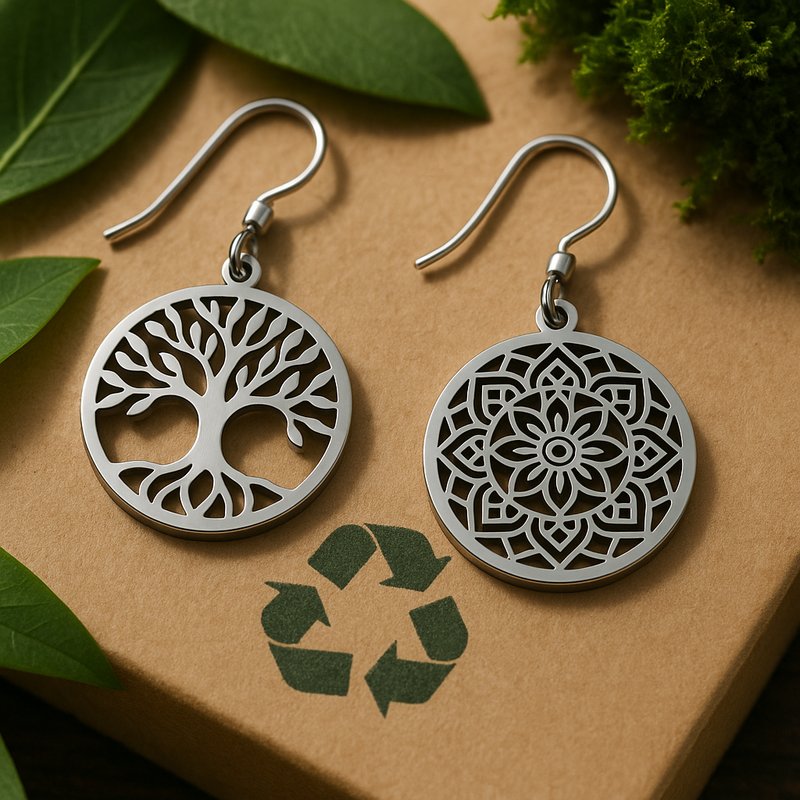Stainless Steel Earrings: Material & Craft

Introduction
Stainless steel earrings symbolize an intersection of strength and elegance, crafted with precision and innovation. For B2B clients exploring OEM/ODM manufacturing, understanding the intricacies of material choices and technological expertise is crucial. This article delves into the dichotomy between 304 vs 316L stainless steel, explores advanced crafting techniques like laser cutting and embossing, and highlights eco-friendly manufacturing practices. As the jewelry industry pivots towards sustainable and versatile options, stainless steel earrings offer a promising avenue.
Section 1: 304 vs 316L Stainless Steel – Corrosion Resistance & Applications
Choosing the right stainless steel for earrings is a critical decision influenced by factors such as corrosion resistance, durability, and aesthetic appeal. 304 stainless steel is widely used due to its general corrosion resistance, appealing shine, and cost-effectiveness. However, for environments with higher saline exposure, 316L stainless steel prevails with its superior resistance to corrosion due to added molybdenum content. This makes 316L an ideal choice for luxury and high-end fittings, especially in coastal regions, while 304 remains popular for everyday designs.
- 304: Best for everyday wear and less corrosive environments.
- 316L: Ideal for high-end jewelry and harsh conditions.
Ultimately, selection depends on target market specifications, where 316L is often chosen for premium collections, ensuring longevity and uncompromised shine.
Section 2: Advanced Crafting Techniques – Laser Cutting & Embossing Applications
Laser cutting and embossing have transformed jewelry design by offering precision and creative freedom previously unattainable. Laser cutting allows manufacturers to achieve intricate designs with impeccable speed and consistency, facilitating mass production without sacrificing quality. The finishing achieved by laser is smooth, reducing the need for extensive post-processing steps. Embossing, on the other hand, creates texture and depth, elevating simple designs to sophisticated art pieces.
- Laser Cutting: Enables complex, delicate patterns.
- Embossing: Adds texture and unique aesthetic features.
These techniques allow businesses to showcase versatility in design, catering to both minimalist trends and ornate preferences.
Section 3: Eco-Friendly Production Practices
The shift towards environmental sustainability in jewelry manufacturing is apparent in the growing preference for eco-friendly practices. Stainless steel jewelry production embraces this change by incorporating methods like waste material recycling and green electroplating. Waste recycling helps in minimizing the carbon footprint, converting excess materials into reusable resources. Meanwhile, green electroplating reduces hazardous waste, ensuring safer production processes without compromising quality.
- Waste Recycling: Converts manufacturing byproducts into viable materials.
- Green Electroplating: Uses less harmful chemicals.
Such practices not only enhance corporate responsibility but also appeal to increasingly eco-conscious consumers, aligning with global sustainability goals.
Conclusion
Stainless steel earrings represent modern advancements in both material science and manufacturing technology. As B2B clients navigate options for OEM/ODM partnerships, understanding the benefits of different steel grades, crafting methods, and sustainable production is imperative. Ready to innovate your jewelry line? Contact us today for tailored solutions that meet your production and ethical standards.
